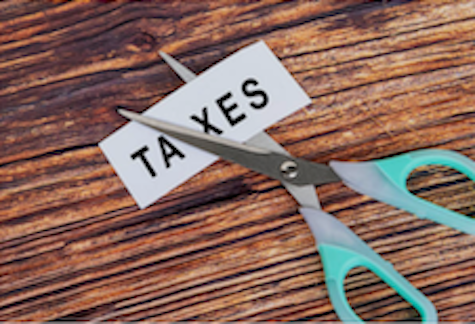Fax: 07 5452 7301
Email: nathan@ffsolutions.com.au
Latest News
Labor tweaks stage 3 tax cuts to make room for ‘middle Australia’ Following years of mixed messaging, Labor has bowed to economic pressure and announced changes to its stage three tax cuts.
. Only those earning less than $150,000 will benefit from the impending tax cuts, which were originally slated to abolish the 37 per cent tax bracket applied to income between $120,000 and $180,000 and reduce the 32.5 per cent tax rate to 30 per cent for all incomes between $45,000 and $200,000. However, with rising inflation and consequent increases to interest rates, Labor has pivoted to make room for cost-of-living ease for middle Australia, effectively scrapping the already legislated stage three rollout – something Prime Minister Albanese said he would not do going into the last election. This means that those earning $200,000 or more will receive a $4,529 cut, instead of the legislated $9,075 they were due to receive from 1 July. Under the changes, the 19 per cent tax rate that applies to incomes between the $18,200 tax-free threshold and $45,000 will be lowered to 16 per cent. Those earning between $45,000 and $135,000 will be taxed at 30 per cent, while the 37 per cent tax rate will be reinstated and apply to incomes between $135,000 and $190,000, after which the 45 per cent rate will apply. This means that someone on $73,000 will receive a tax cut over $1,500, more than double the amount under the previous plan, while somebody on $100,000 will have their tax cut increased from $1,375 to $2,179. On Thursday before the National Press Club, Prime Minister Albanese said: “Our government will deliver a tax cut for every Australian taxpayer”. "This is a plan for middle Australia that delivers for every Australian taxpayer, right up and down the income ladder,” he said. The tax cuts won't hurt inflation, he said. “This option is broadly revenue neutral and will not add to inflationary pressures,” the PM cited a Treasury report and added that there are no implications for the Reserve Bank’s forecasts. “Some would say that we should stay the course, even if it means going to the wrong destination. “To them I say, we are choosing a better way forward given the changed circumstances.” The PM also added that his government will increase the low-income threshold at which the Medicare levy applies. According to media reports, the government plans to launch an ad campaign to help sell its obvious backflip. ‘Different position for best reason’ Doing the media rounds on Thursday morning, Treasurer Jim Chalmers defended Labor’s surprise move, noting that the government has “come to a different position” for “the best possible reason”, which is “we can provide more tax relief for more people to help them with the cost‑of‑living”. “Now we are being upfront with people and saying we have come to a different view. We've come to a different view because what we're proposing today is better for middle Australia, better for cost‑of‑living pressures, better for women and workforce participation and better for the economy, without adding to the inflationary pressures that we are dealing with,” Mr Chalmers told ABC Radio. Questioned about whether these broken promises could be costly for Labor, Mr Chalmers said “what we're doing here is we're putting people before politics”. “Of course, these will be politically contentious. Our opponents will play their usual mindless, nasty, negative politics over this. “We understand that but I believe you build trust by making the right decisions for the right reasons in the interests of the people and when you come to a different view, as we have, you front up and explain why the circumstances have changed, why our position has changed and how people will benefit from what we are proposing today”. In the lead-up to last year’s May budget, Treasurer Chalmers was, however, selling a different story, reinforcing at the time that the government would push ahead with stage three tax cuts. This story would later shift to suggest that Labor was prepared to re-evaluate the tax cuts if inflation remained an issue.
Maja Garaca Djurdjevic |

